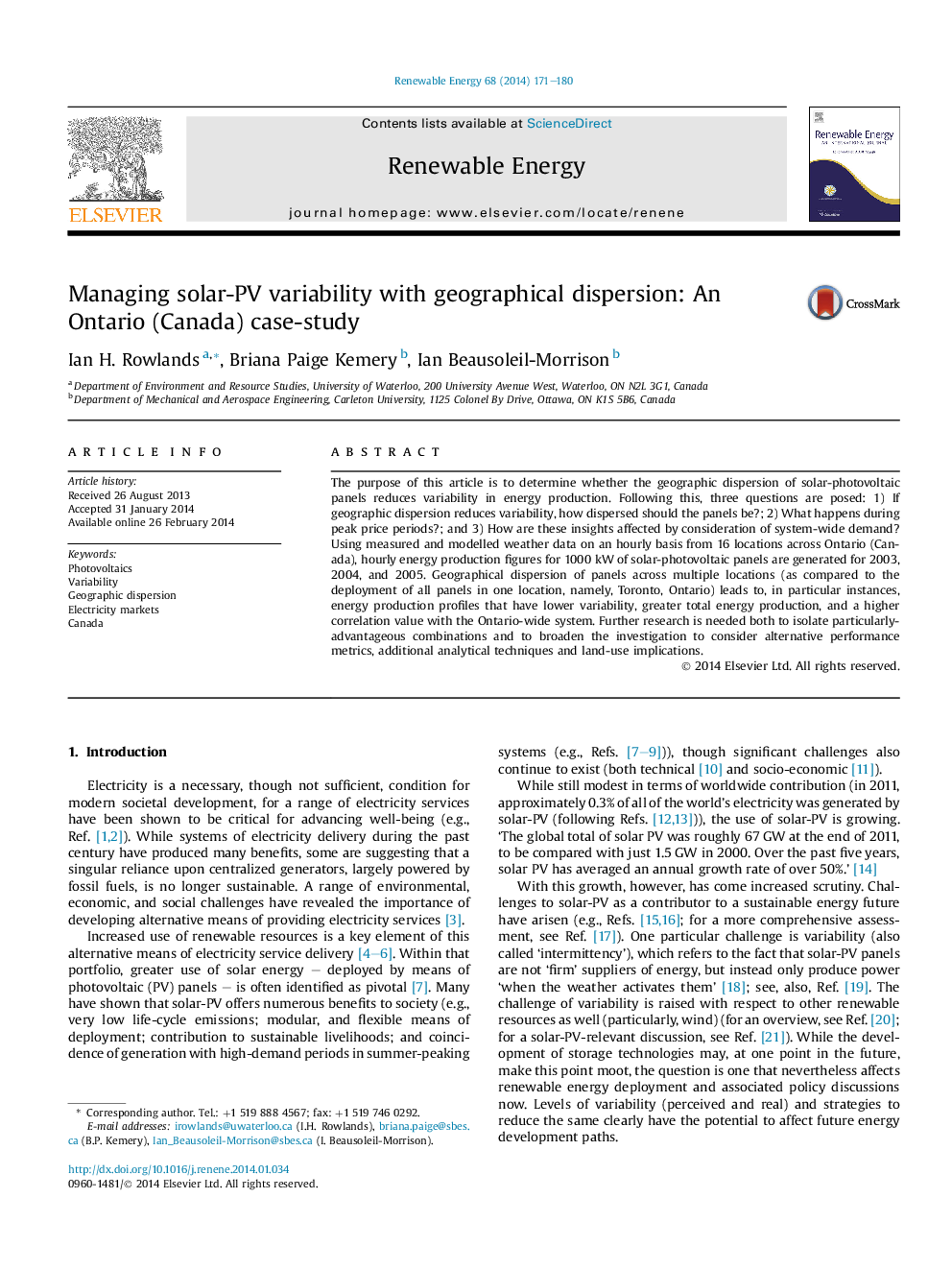| Article ID | Journal | Published Year | Pages | File Type |
|---|---|---|---|---|
| 300122 | Renewable Energy | 2014 | 10 Pages |
•Energy production correlation values fall with greater distance between PV panels.•Geographic dispersion reduces variability during peak periods.•Dividing panels between Toronto and other locations can increase performance.•Further research is needed to specify combinations and examine additional metrics.
The purpose of this article is to determine whether the geographic dispersion of solar-photovoltaic panels reduces variability in energy production. Following this, three questions are posed: 1) If geographic dispersion reduces variability, how dispersed should the panels be?; 2) What happens during peak price periods?; and 3) How are these insights affected by consideration of system-wide demand? Using measured and modelled weather data on an hourly basis from 16 locations across Ontario (Canada), hourly energy production figures for 1000 kW of solar-photovoltaic panels are generated for 2003, 2004, and 2005. Geographical dispersion of panels across multiple locations (as compared to the deployment of all panels in one location, namely, Toronto, Ontario) leads to, in particular instances, energy production profiles that have lower variability, greater total energy production, and a higher correlation value with the Ontario-wide system. Further research is needed both to isolate particularly-advantageous combinations and to broaden the investigation to consider alternative performance metrics, additional analytical techniques and land-use implications.
